Exposing the contents of your genes
Would you ever consider donating your genome to research? We meet a man who has, and find out why. Plus, we get our hands dirty in the search for new antibiotics, take a look at the ethics of human gene editing, and our gene of the month is getting ahead in life. This is the Naked Genetics podcast for September 2017, brought to you in association with The Genetics Society.
In this episode
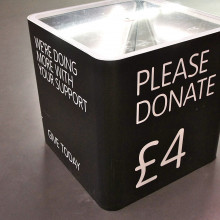
01:04 - Would you donate your genome?
Would you donate your genome?
with Colin Smith, University of Brighton
We’ve heard about donating blood, tissue, tumours, organs, or even your whole deceased body for medical research - but would you donate your genome? Colin Smith, Professor of functional genomics at the University of Brighton has done just that. He had his genome sequenced and donated it through a process called Open Consent to the Personal Genome Project UK, meaning that all his genetic data is out there on the internet for anyone to see. This is the kind of thing that most people might feel a little bit nervous about, so when Kat Arney met him at the British Science Festival in Brighton earlier this month, she had a few questions.
Kat - So when you talk about having your genome sequenced, is this the kind of analysis that something like 23 and Me would do, where it’s looking at little snapshots or is this reading all the letters of your genome?
Colin - This is reading all the letters. So, the human genome is about 6.4 billion base pairs. 23 and Me would look at about 800,000 nucleotides so there's a huge difference here.
Kat - This is like the whole recipe book of you.
Colin - Yeah, it’s the Full Monty!
Kat - And what made you decide to put it out there to make it public? Can I go and browse through your genes?
Colin - Yeah. Anybody can browse through my genes. You can download my complete genome. In fact, through my website, you can click on the genome report which lists all of the notable features of my genome and my health risks, and potential health benefits.
Kat - Is it anonymous or would I be able to know that it’s you?
Colin - No. It’s not anonymous. I've self-identified as one of the Personal Genome Project ambassadors.
Kat - So, I've been interviewing people for quite a few years about having personal genome sequenced, about this kind of data and pretty much, everyone I talked to says, “This is private, personal data. This is very particular to you. We should really think about privacy.” And you have just put it all out there on the internet. What was your thought process behind deciding to do that?
Colin - Ultimately, if millions of people do this it’s going to be a game changer because in addition to the data being made available, our health records are going to be made available as well – our personal traits, health issues that we may have encountered.
So, if it’s publicly available, it means not only can scientists look at it, but citizen science can have a good go at it as well. But I'm sure that in the not too distant future, citizen science is going to play a big role in discovery because if the data is freely available and not behind a pay wall or not kept anonymous, there's going to be a lot more benefit to society.
Kat - I'm not sure I like the idea of someone rifling through my DNA and go, “Oh, look! Did you know…” or “Oh, look! She has a risk of Alzheimer’s” or “She’s got a risk of heart disease.” I'm not entirely comfortable with that. How would you respond to that sort of, “Oh, I'm a bit worried about this.”?
Colin - Clearly, it’s not for everybody. For me, I just don’t have a problem with waiving anonymity to this. But there's another issue which is important. The notion that you can keep genomic data anonymous is really probably not true even though people are told that their genomic data would be anonymous.
People have taken data from research papers, have identified individuals and sent a list of the individuals to – for example, the editor of science. And they were absolutely correct in naming all of these individuals who had been told that their genomic data would be anonymous. So, I really don’t think you can keep it anonymous and research groups and consortia who are telling people it’s going to be anonymous are doing the volunteers a great disservice.
Kat - Arguably, if you look at social media and the kind of things that people are prepared to share on the internet, I've had friends who’ve had the 23 and Me sequences done and shared them on the internet and people share all sorts of information about their health. Is this just an extension of that sort of sharing vibe for some people?
Colin - Yes. I think it could be. I mean, they're also self-interest as well. For example, by joining up as part of the personal genome project, you get feedback. You interact with the researchers. You can provide more samples. For example, my epigenome is being done which can show you how much you’ve been exposed to cigarette smoke or environmental damage, whether your biological ageing corresponds to your chronological age. So there's self-interest as well.
And also, with citizen science, somebody from Bangladesh or wherever, could email me and say, “By the way, I've noticed this correlation between these variants and this condition.” So it’s also self-interest as well.
Kat - And have you had a good old rifle through your genome? Is there anything you're prepared to say that you found in there that maybe you found surprising or you didn’t expect to find?
Colin - Yes! It’s been very useful exercise for me. I have some mutations in an enzyme which breaks down these drugs called thiopurine drugs which are used as immunosuppressants or anti-cancer drugs. So, my enzymes don’t work. So if I'm given these drugs, they will accumulate in my body and potentially be fatal, causing organ failure, so that’s good to know.
Kat - And in terms of the science. I've often talked about, if we’re going to solve the problems of how do our genes work, how do our genes make us who we are and influence our risk of disease, we just need more data. If people do think, “Okay, this is a good thing to get involved in. More data is better data, is better for science.” How can people get their genomes read at this level of detail and then share them?
Colin - Well, they can enrol with Personal Genome Project UK and then they would be put in a waiting list because this is proving extremely popular. However, I didn’t have my genome sequenced by the Personal Genome Project. I had my genome sequenced privately 4 years ago and I heard about Personal Genome Project and then contacted them asking whether I could donate my genome.
So you can have your genome done by a company and you can have it done at material cost if you're going to donate it to Personal Genome Project UK. And it’s about £800. When you consider the first genome, took 15 years to sequence and cost about $3 billion, 800 quid…
Kat - Bargain!
Colin - Bargain - it’s incredible. But you can't just have your genome done and donate it. You have to donate under open consent. You have to provide informed open consent. So you have to pass an exam to show that you understand the risks, you understand genetics, and you understand what risk means. And anyone that you understand also the potential risks of going public as well.
Kat - I have rolled this kind of really deep connection with your genome, finding it out, putting it online, making it available to share. For you, it’s been a positive experience.
Colin - It’s been a very positive experience because everyone is so enthusiastic about it. About sharing information and it’s two-way as well. I'm now interacting with the Personal Genome Project team who are based at UCL in London and they update you because of course, interpretation of genomes changes continuously because new information comes to light every week.
And your genome on its own doesn’t really mean much. It’s only when you compare it with other genomes. So once there's another million genomes out there, there’ll be far richer information available on your own genome about what your predispositions may be.
I have acted on some of the findings from my genome and had some screening for peace of mind of some of the increased risk of certain conditions and I was negative. It’s great to have done that because I don’t have to worry about it anymore.
Kat - That’s Colin Smith from the University of Brighton. And if you’d like to join the fairly sizeable queue to have your genome sequenced by the Personal Genome Project and release it to the public, you can find out more at https://www.personalgenomes.org.uk/ And there are also projects in the US, Canada and Austria too.

09:43 - Getting dirty with microbiology
Getting dirty with microbiology
with Laura Bowater, University of East Anglia
At the British Science Festival in Brighton, Kat Arney was part of a panel discussion organised by the Biochemical Society focusing on DIY biology - the idea that anyone can get their hands dirty and do some science. And, as she found out from fellow panellist Laura Bowater from the University of East Anglia, some projects are taking that very literally.
Laura - The problem with antibiotic resistance is that we are getting more and more bacteria that are developing resistance to a wider and bigger number of antibiotics. And at the same time, the research into making new antibiotics is going down. So, it’s a two-pronged problem – bacteria getting more and more resistant, and we’re finding less and less antibiotics that we’re using in the clinic.
Kat - And why do you think that soil might be a source of new antibiotics?
Laura - Because we know that soil contains millions and millions of bacteria and we know in the past that some of those bacteria that we found in the soil are actually producing antibiotics. So we think that by going back to the soil and looking at the soil at the soil in new ways, and by searching harder, we might find some new bacteria that are producing new antibiotics that eventually might end up in the clinic.
Kat - This seems a little bit weird to me that you’ve got bacteria making antibiotics that kill other bacteria. Why are they doing that?
Laura - Well, they only do that in the concentrations that we use in the clinic or in the lab. So, we use really high concentrations of antibiotics and they do kill other bacteria. And what we’re realising now is that in nature, those antibiotics are not produced at those levels at all. They're produced at much smaller concentrations.
What we think is that actually, in reality, in nature, what these molecules are, are signalling molecules between different bacteria where they're passing messages between each other, perhaps about concentrations of food or the environment. So they're a way of communication and not the weapons that we think they might be, the way that we’re using them in the clinic.
Kat - So we’ve got these bacteria in the soil all over the place, some potentially unknown to science, potentially making exciting antibiotics – whether they're using them to kill each other or talk to each other – how are you trying to get the public to find these bugs? What are you trying to do?
Laura - What we’re trying to do is to encourage the members of the public to work with us. So, we want them to pick soil and they’ll come and bring the soil to us and we’ll put the soil in water, shake it, and actually, shake the bacteria off into the water. And then we get you to take little drops of the water and to spread that onto agar plates, and we’re using lots of different agar plates which are the plates that have nutrients in it that allowed the bacteria to grow.
Bacteria can be fussy so we would just want to give them the ingredients that they need and we’re hoping that when we take them back to the lab and grow them under different conditions that we can encourage new ones that perhaps haven’t been spotted before, because we weren’t able to grow them, to grow this time around and to produce these new drugs hopefully.
Kat - How do you spot if a bacteria is a new one?
Laura - Well, it’s difficult and you can't just do it by eye. So you can tell straight away by eye if it’s producing an antibiotic that might be killing another bacteria because you can see that on a plate because no other bacteria can grow near it. But we can tell some things about the bacteria so we can have an idea of roughly the kind of bacteria it is, but we don’t know. What we have to do is that we have to actually look at them in detail and perhaps even send them away for sequencing to absolutely find out whether this is a new one that hasn’t been found before.
Kat - So, if you found a new species of bacteria, you’ve got its DNA analysed, you know this is something new, how do you then work out what antibiotic it might be making?
Laura - Well, we do that by looking at the DNA and we know a lot about the kind of genes that make antibiotics now. So, what we have are really clever computer programs that will scan the genomes of the bacteria and they’ll find something that they’ll think, “Ooh! We think that’s a gene that might make an antibiotic.”
And when we know that, we can then go back and look at other antibiotics that might be similar and their genes and from that, we can kind of work out that that gene looks like something we found before that we know makes this. So perhaps, our one is making something similar but a little bit different.
Kat - So this all sounds very cool. We can find new antibiotics, we can find new species of bacteria. I've got a window box. Do you want some soil from my window box? How can people get involved in this project?
Laura - Yes, please. So, we will be running an event in Glasgow in the Botanic Gardens. We’ve also got another one coming up in the Norwich Science Festival. We’ve got a website called Antibiotics Unearthed. So, look us up there, Antibiotics Unearthed and you'll see our Facebook page and our Twitter tag, and you can contact us that way.
Kat - So, if people have got some interesting soil, they can just send it in. Do you want people’s soil samples basically?
Laura - Yes, we really like your soil samples, thank you.
Kat - Very few people might admit to that. And have you found any good candidates so far? And then, what happens if you do find a good one?
Laura - Well, what we’ve done is we found some bacteria that we know are producing something that looks like it’s killing two or three different potential pathogens that humans might have. So something called E. coli for example, which can cause nasty diseases. So we have two or three that we’re really interested in and that we need to follow up further.
And if we do find something eventually that we think has potential then it’s a start of probably a 10 to 20 year process where we have to look at that. We have to see if we can make it in sufficient quantities that we can use it, that when we give it to people or animals that it’s going to be safe. And that actually, when we take it and use it for us, that it does kill the bacteria in us and not just in the ground.
Kat - I'm going to go out and have a completely different view of looking at flower beds now and thinking, is there the new antibiotic superbug killer in there?
Laura - I hope there is!
Kat - UEA’s Professor Laura Bowater. The Antibiotics Unearthed project is being run by the Microbiology Society - just search online for ‘antibiotics unearthed’ to find out how to post in samples of your favourite soil, or to take part in a pop-up research event near you.
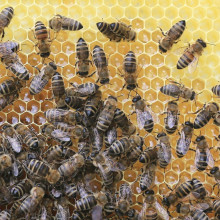
16:06 - Plant molecules make worker bees
Plant molecules make worker bees
The nature of the biological switch that controls whether a female honeybee will become a sterile worker or a sexually active queen has been uncovered by researchers at Nanjing University in China.
Writing in the journal PLOS Genetics, the team discovered that tiny molecular messages produced in plants, known as microRNAs, end up in the pollen and honey that female bee larvae are fed on as they develop.
This mixture, known as bee bread, is only fed to larvae that grow up to be workers, while potential queens feast on royal jelly, produced by special nurse bees. The plant microRNAs seem to affect the activity of particular genes in the developing workers, including an important gene called TOR which is known to be involved in separating workers from queens.
While it’s long been known that the bees’ dietary differences must have something to do with their sexual development, it wasn’t known exactly how this works. And although microRNAs have been shown to affect the activity of genes, this is the first example of microRNAs made by one species affecting the development of another - so it’s news that has created a bit of a buzz.
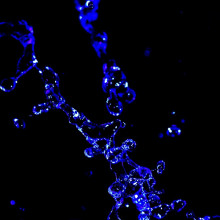
17:23 - Germs down the generations
Germs down the generations
A relatively tiny group of human ancestors, living around 24,000 years ago, are responsible for transmitting an inherited strain of human herpesvirus, known as HHV-6, that still affects millions of people around the world today, scientists at the University of Leicester have discovered.
HHV6 is unusual because it can insert itself into the genome and lie low, unlike other herpes viruses, which hide inside neurones and other cells types but don’t usually integrate into our DNA. This also means that they can be passed on down the generations, if they’ve inserted into a cell that will become egg or sperm.
After studying the viral DNA inserted in the genomes of people from the UK, Europe, Japan, China and Pakistan, the scientists found that some of the inherited viruses were very similar to each other and are also located in the same part of the genome in people who weren’t known to be immediately related.
By comparing subtle changes in the virus DNA that had accumulated over thousands of years, the researchers concluded that these viral infections originated in a small number of ancestors thousands of years ago. And although the infection is ancient, up to two per cent of the UK population today carry inherited HHV6, and there are concerns it could reactivate and cause health problems. Understanding more about the genetic legacy of the virus will help to identify its long term effects on health.
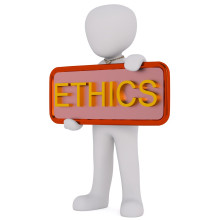
19:06 - Ethics and gene editing
Ethics and gene editing
with Jackie Leach Scully, University of Newcastle
It’s time to return to the British Science Festival in Brighton and a fascinating guest lecture organised by the Biochemical Society. Jackie Leach Scully, Professor of Social Ethics and Bioethics at Newcastle University took us through a detailed and careful look at the ethics of gene editing in humans - a hot and exciting topic in the research world, but one that’s fraught with ethical and social implications. Kat Arney started by asking her to clarify what we mean when we talk about human gene editing or genetic engineering.
Jackie - Well conventionally, we take it as there being two major areas. One is about the use of something like gene editing to eradicate or at least reduce the impact of diseases and disabilities. And the other is about augmenting or enhancing human capacities through genetics means. People have said it’s something like making people better or making better people.
Kat - What are the sort of areas that you home in on to think about?
Jackie - One of the areas is about which kind of interventions are going to be looming over the horizon and which need addressing now, versus the ones which are much more speculative, a bit more science ‘fictiony’ that we may have been thinking about for a while. Sometimes issues around regulation and legislation and so on are much, much more boring than imagining Frankenstein’s monsters and mutant societies, and so on. But both of those actually I think need to be looked at.
I don’t think it’s right to trivialise some of the science fiction aspects because – and some people can get very dismissive of them - they're never going to happen and they're never going to happen like that – but it’s important to try and follow those intuitions, trying to imagine what would it be like if gene editing became a routine part of healthcare or cosmetic practices or something like that.
Kat - Because I think even 5 years ago, before CRISPR became really big, if you had told me that scientists in China were going to be editing human embryos, I would’ve just said, “Pfft! Get away, that’s…” But this year, we’ve seen that that’s what they're doing.
Jackie - Yeah, that’s right. So it’s unwise to say these things won't happen and we can't often anticipate what some kind of really transformative intervention might come along.
Kat - So, in your lecture you highlighted three areas really about efficacy – does this stuff actually work and I guess there are ethical questions around doing the research to see if this stuff works. And then safety – is it safe to do this to people? - and then the sort of the broader ones about society. What does this really mean? Let’s start with the first one about does this stuff work? How do we get to it working?
Jackie - Obviously, it’s an ethical issue because if somebody comes along and effectively selling a product saying this does that, then you want to be sure that it actually does do that, and that you're not selling to the public something that doesn’t do it or doesn’t do it as well as it’s claimed.
I think we’re more sophisticated nowadays, more alert to the idea of there being, of hyping of technologies. We’ve seen it happen in the past. We’re a bit more savvy about it. But of course particularly, when you're talking about human disease and disability, there's a great yearning among many peoples – particularly those are experiencing it directly - to be able to improve things. There's a lot of hope around some of these technologies.
I know that some of the pioneers in gene editing as soon as the first announcements came out, were inundated by requests from the general public about when treatments were going to become available. And that’s really difficult because we know that treatments become available possibly 10 years, 15 years down the line. They may not be quite as good as we hoped at the onset. They would always need a lot of regulation, a lot of care around it to make sure that they are safe and so on. So you don’t want to raise people’s expectations about what this thing can do.
But in the real world of course, science and research are also trying to get public attention, and public support for your research and funding too. So, you have to exert a certain amount of self-discipline not to overstate your case.
Kat - And that leads us on to the ideas of the safety and the kind of the steps that you have to go through to make something safe and effective. So for example, with gene editing, if you think about doing it in human embryos, you need human embryos to experiment on.
Jackie - Yes, you do. At the moment, we can do that at least up to a certain time of embryo development although there's debate at the moment about extending that time limit, which is a legally set limit. I think most people would be okay with the idea that we need to do the research on embryos before we go anywhere near making a real human out of that embryo. There are certain people and certain religious groups that have a lot of concerns about working on human embryos at all and the ethics of that. So, it’s not something to be taken for granted that we can do this.
Kat - And then more broadly in society, thinking about what sort of people - if we are making people better or making better people, what does that mean for our society? You’ve talked about using gene editing for curing disease and disability. But that’s almost like equating that disability is somehow a disease. What happens if we try and get rid of these things from our society?
Jackie - At the outset, I think it looks like an unequivocal good. It’s probably going to be more nuanced than that, certainly with cases of disability. There are some very active voices in the disability movement that it’s saying things like, “Not all disability is a tragedy. Some of it is perfectly compatible with a flourishing life.”
Even some diseases are and there are ways in which we might want to think about – as I think I mentioned in the lecture - there are some genetic diseases that are sufficiently common that you begin to wonder putting it teleologically why they're there. Is there perhaps an associated benefit that we’re not aware of that may meant that they have been perpetuated through evolution?
But even leaving that aside, it’s I think a real over-simplification but attempting one in public debate at least to sort of lump all disease and disability together as being all equally unwanted and equally terrible and life-affecting, and equally something that we want to get rid of.
Kat - And in terms of the diversity of our society, is it a good thing if we’re working towards the sort of homogenous perfect human, whatever that is or if that’s possible?
Jackie - It’s probably not possible and I think it’s probable that there’ll be – if gene editing pans out and if it becomes possible to do it for enhancing or similar augmenting aims then it’s just likely that we’ll start introducing genetic diversity as is that will start reducing it.
There are some very subtle questions that need to be explored about what it means to us as a society, to start thinking about ‘perfectibility’ and what we mean by perfect. If we think about that idea about perfect beauty, about the perfect kind of person, the desirable kind of person, that’s changed such a lot over history – even recorded history.
And it’s so culturally variable as well that it would be, I think, quite unwise to decide, “Okay, this is the kind of person that we really want to have and let’s make sure that we set that into the genome so that we can ensure that everybody pops out looking like that” because 10, 20 years down the line, the fashion might be for somebody who looks quite different.
Kat - And finally, as a writer, I'm fascinated with the idea that we can use science fiction whether that’s books or films or radio plays or even podcasts like this to explore these issues in a fictional way and get people thinking about it. Do you think that we should have more of that to engage people with these ideas for how do we want society to be?
Jackie - I’d hope so because for those who aren’t scientists and aren’t utterly obsessed with science and the detail of the science, it can be very dry. It can be not very engaging. You can miss the broad sweep within all the little details. I'm an avid science fiction reader myself and I would’ve been and I like to say that a good deal of my moral framework research by reading a sort of young adult science fiction many, many years ago. Particularly the work of Andre Norton if anybody knows her.
I think these sorts of things can be enormously influential and I’d like to see a wider range, not necessarily the more doom laden aspect of catastrophes and disaster scenarios of using something like gene editing. But also, exploring the sort of fairly sophisticated and at a nuanced what might it be like within a society that routinely used something like gene editing and go beyond the standard things of oh, people would transform themselves but explore perhaps what might happen within a family, what might happen within schools and so on - everyday mundane things.
Kat - I love the idea of, if you have it in your Tinder profile, would you swipe left or right depending on how modified you were?
Jackie - Something like that, yeah!
Kat - Jackie Leach Scully from the University of Newcastle.
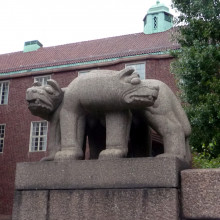
28:48 - Gene of the Month - Cerberus
Gene of the Month - Cerberus
According to Greek mythology, Cerberus is the infamous Hound of Hades - the multi-headed guard dog responsible for watching over the gates of hell and making sure none of the naughty people get out, because, fairly obviously, who would want to try and break in? So it’s no surprise that this big bad dog is the inspiration for the name of a gene that can induce extra heads, hearts and livers in frog tadpoles. The story starts with researchers at the University of California, Los Angeles, who noticed a particularly abundant messenger RNA in developing tadpoles - messenger RNA being the message that’s produced when a gene is read. When they purified it and injected it into frog embryos, they saw strange double-headed creatures, and some with duplicated organs too. That was back in 1996, and since then scientists have found versions of Cerberus in many other organisms, including mammals and humans - and while altering Cerberus activity isn’t enough to grow animals with extra heads, it seems to be very important for proper development of the head and heart, and also for setting up the differences between the left and right sides of the body. In keeping with the hellbound theme, when Japanese researchers discovered a new gene related to Cerberus in fish, they named it Charon, after the mythical Greek boatman who ferries dead souls across the River Styx to their final destination in Hades. And a version of Cerberus in chickens is known as Caronte, the Italian name for the same character. We don’t know if it’s strictly true to the story, but we do like to imagine that he has extra-large pockets full of dog biscuits for Cerberus’s multiple mouths.










Comments
Add a comment